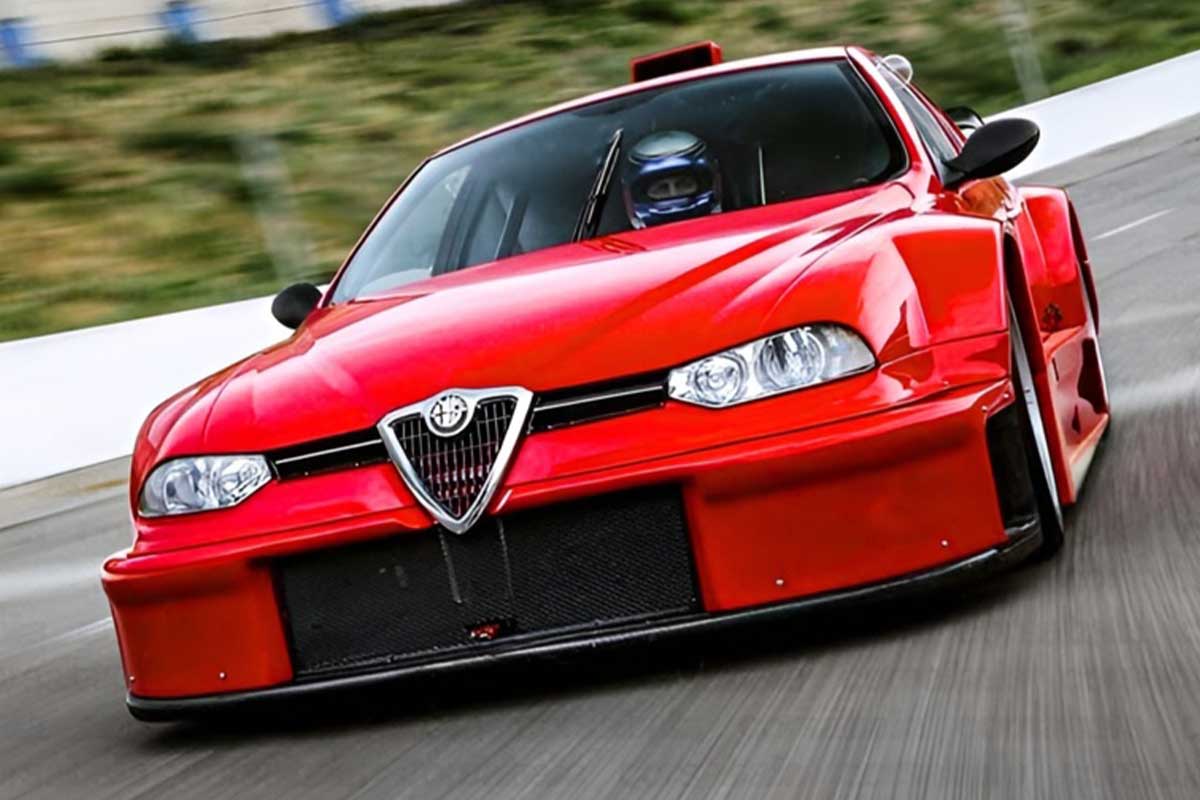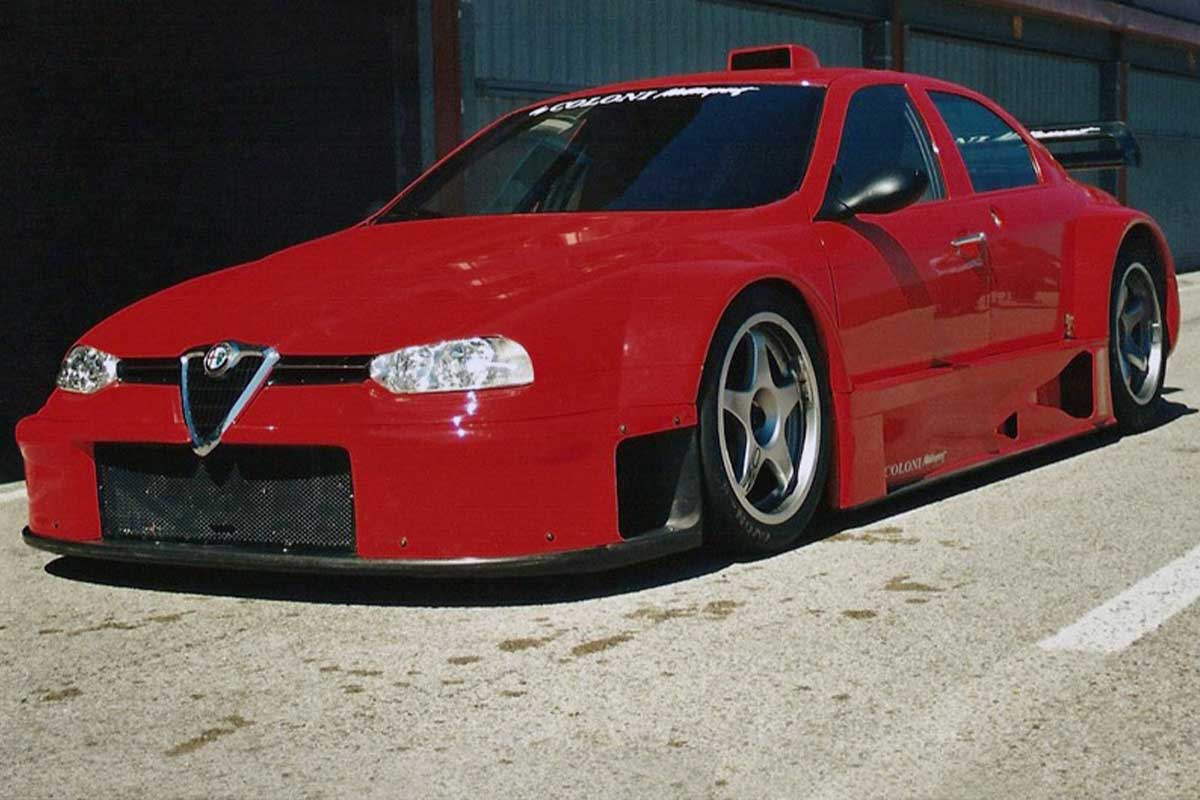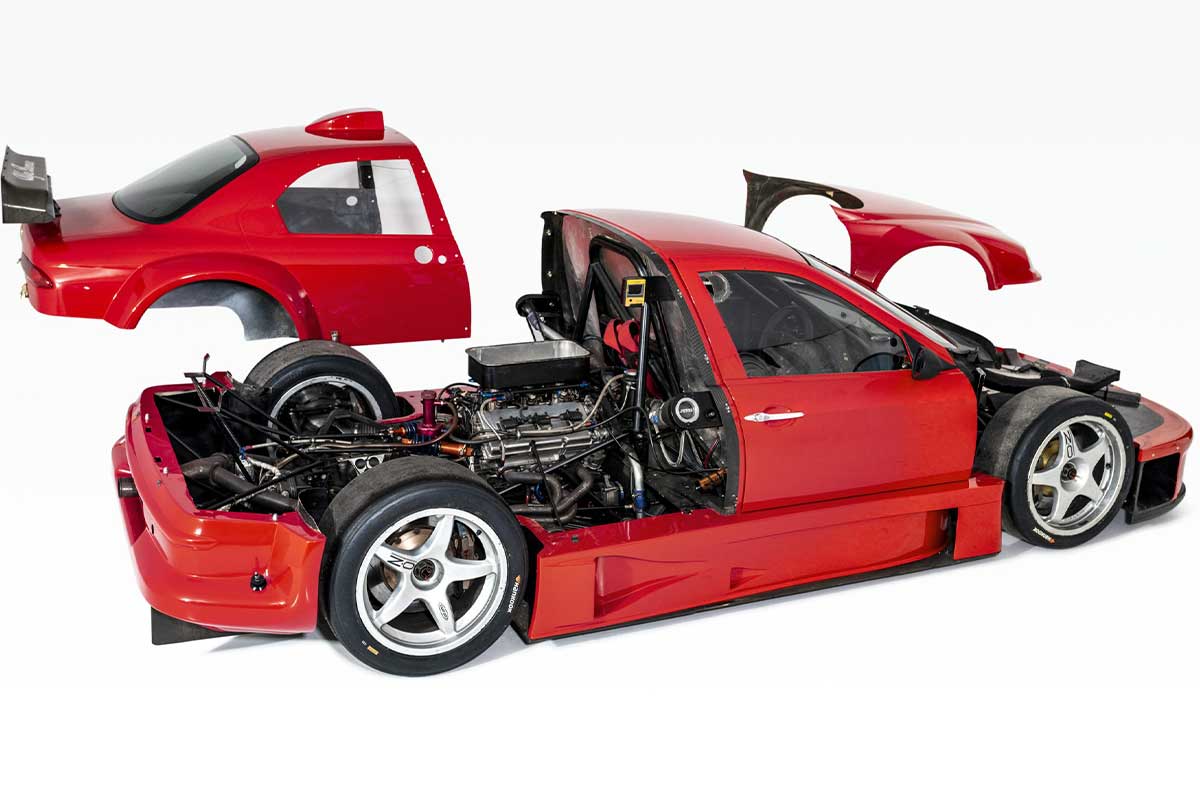
At the end of the '80s, Bernie Ecclestone conceived the idea of a Procar championship based on touring cars, which would take over from the famous Procar BMW M1 championship which ran from 1979 to 1981. Behind the appearance of a vitamin-packed touring saloon was in reality a kind of single-seater body, based on a tubular chassis, while retaining the aesthetic appearance of the production model. Alfa Romeo had developed a spectacular 164 Procar, equipped with the V10 engine originally developed for F1, but the project never came to fruition, the championship remaining stillborn. Instead, the sedan was demonstrated at Monza in 1988, in the hands of Riccardo Patrèse.
The 156, queen of the 2-litre class
Alfa Romeo then enjoyed DTM glory with the 155 V6 Ti, champion in 1993. When the 156 was launched in 1996, the DTM championship, which had become an ITC, was on the verge of disappearing, due to soaring costs and the defection of manufacturers. Nevertheless, the Italian sedan continued the Biscione's sporting heritage in the 2-liter supertouring class. The 156 GTA won the Italian and European Touring Car Championships four times in succession, with Italian drivers Fabrizio Giovanardi and Gabriele Tarquini.
At the end of the 90s, just as the DTM was about to rise from the ashes, the idea of a silhouette championship resurfaced. A Spanish company called RPM was working on the creation of a stock-car-inspired championship, the Maxiturismo Championship. RPM commissioned Coloni to design a chassis for all cars, on which teams could install the engine and bodywork of their choice.
Coloni, the former F1 tyke
With the support of Christian Peruzzi, Director of Fiat, Alfa and Lancia in Germany, and with the green light from Italian headquarters, Coloni set about designing an Alfa Romeo 156 for the Group E, a worthy heir to the 164 Procar.
Let's take a quick look at the history of Scuderia Coloni, a team founded in 1982 by Enzo Coloni. After winning the Italian F3 championship, this other Enzo embarked on the F1 adventure in 1987, but due to a lack of resources, the team remained confined to the back of the grid...when it did manage to qualify! Until 1991, Scuderia Coloni tried to qualify 82 times, but only took part in 14 Grands Prix. At the time, faced with the inflation in the number of teams (20 teams and 41 entries in 1990!), F1 had introduced pre-qualifying heats. After his failure in Formula 1, Coloni tried his hand at lower categories, such as Formula 3000, Formula 3 and GP2, with rather satisfactory results.
What a face! And what a sound!

In the same vein as the Alfa Romeo 164 Procar, the 156 Coloni S1 uses the bodywork of the city sedan, but with maxi-wide tracks, carbon-fiber panels and just two doors. The look is spectacular, worthy of the 155 DTM. Removal of the rear section, which rises like the 164 Procar, reveals the engine placed in the rear central position: a 3.0-liter Alfa Romeo V6 developing 380 hp, coupled to a six-speed Hewland sequential gearbox. Suspension consisted of superimposed wishbones and Eibach shock absorbers front and rear. Wheels were 18-inch OZ Racing rims, housing Brembo carbon-ceramic disc brakes. The driver sat in the middle, as in a single-seater.

In qualifying configuration, power could rise to 500 hp at 10,000 rpm, guaranteeing an absolutely fantastic sound. Weighing in at just 900 kilos, performance was astounding, with a 0 to 100 in less than 3 seconds and a top speed well in excess of 320 km/h.
No follow-up, once again
But there was a problem: the price. A car cost the equivalent of US$300,000 at the time, not including track infrastructure. The 156 Coloni S1 had to convince teams and manufacturers to take part in the Maxiturismo Championship, but no one came forward, as the benefits and visibility of this format, focused on Spain, were far from guaranteed. Too bad, duels with the silhouette-class Mégane Trophy would have been a real treat! The 156 Coloni has since taken part in a number of track days, but has not had a competitive career to speak of.

This is Alfa Romeo's eternal problem, dead projects born in abundance, this 156 competition car that never saw the light of day is just one more project to be aborted, the list is long, Kamal, 164 procar, Mito GTA, Mito cabrio, Brera prototype transformed into a pachyderm, Giulia station wagon, new Alfetta, Spider, E-segment SUV, etc etc....
I had started an article on all the abandoned projects. There are so many that it's been in draft form for 1 year ^^